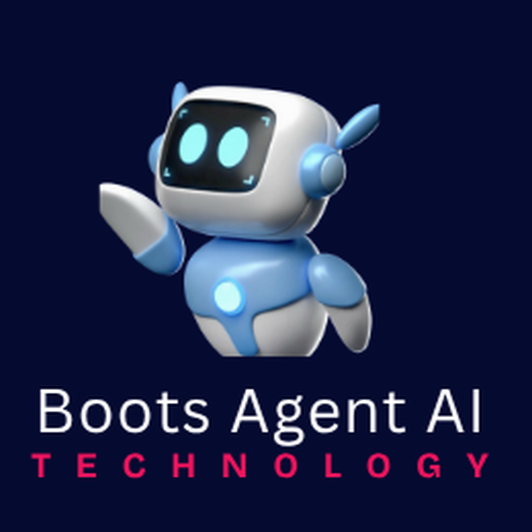BOOTS Framework for AI Implementation in Small Businesses
The BOOTS framework is a structured, step-by-step approach designed specifically for your business to guide business owners through the implementation of AI technologies. It focuses on driving measurable outcomes like increased sales, boosted customer engagement, and improved ROI. By breaking down the process into five key stages—each represented by a letter in "BOOTS"—the framework ensures a smooth, actionable path from initial assessment to long-term success.
This acronym-based model emphasizes practicality, with each stage building on the previous one. It incorporates best practices for AI adoption, such as data-driven decision-making, user-friendly tools, and continuous iteration. Below, we outline the framework, including the meaning of each letter, the objectives, key activities, and expected outcomes.
1. B: Business Assessment
Description: This foundational stage involves a thorough evaluation of the business's current operations, challenges, and opportunities where technology opportunities can make an impact.
Objectives: Identify pain points (e.g., low sales conversion rates or inefficient customer engagement) and align AI solutions with business goals like revenue growth or cost savings.
Key Activities:
Conduct audits of existing processes, data sources, and tech infrastructure.
Interview stakeholders to understand needs (e.g., using surveys or workshops).
Benchmark against industry standards to quantify potential ROI (e.g., estimating a 20-30% sales uplift via AI-driven personalization).
Expected Outcomes: A customized AI roadmap with prioritized use cases, such as chatbots for engagement or predictive analytics for sales forecasting.
Timeline Tip: 1-2 weeks, to keep momentum high.
2. O: Opportunity Mapping
Description: Here, we map out specific AI opportunities that directly tie to boosting sales, engagement, and ROI, ensuring the solutions are feasible for small businesses with limited resources.
Objectives: Prioritize high-impact, low-complexity AI applications that deliver quick wins, like automated email campaigns or recommendation engines.
Key Activities:
Brainstorm and validate AI ideas using tools like SWOT analysis.
Select vendor-agnostic AI tools (e.g., no-code platforms like Zapier AI or Google Cloud AI) that integrate easily.
Calculate projected benefits, such as a 15% increase in engagement through AI-powered social media scheduling.
Expected Outcomes: A shortlist of 3-5 AI initiatives with cost-benefit analyses and implementation blueprints.
Timeline Tip: 1 week, focusing on ideation sessions with the business owner.
3. O: Operational Integration
Description: This stage shifts to hands-on integration, embedding AI into daily operations without disrupting workflows.
Objectives: Seamlessly incorporate AI to enhance processes, ensuring minimal downtime and maximum adoption.
Key Activities:
Set up AI systems (e.g., integrating CRM with AI for lead scoring to boost sales).
Test integrations in a sandbox environment to avoid risks.
Monitor initial performance metrics, like engagement rates from AI chatbots.
Expected Outcomes: Fully operational AI features with baseline data tracking, aiming for immediate ROI indicators like a 10% sales lift in the first month.
Timeline Tip: 2-4 weeks, including pilot testing.
4. T: Training and Testing
Description: Focus on empowering the team through training while rigorously testing AI performance to refine for optimal results.
Objectives: Build internal capabilities and ensure AI delivers on promises, such as higher engagement via personalized content or better ROI through data insights.
Key Activities:
Deliver tailored training sessions (e.g., workshops on using AI dashboards).
Run A/B tests to measure effectiveness (e.g., comparing AI-optimized ads to traditional ones for sales impact).
Gather feedback and iterate based on real-world usage.
Expected Outcomes: Confident users, validated AI performance with data showing improvements (e.g., 25% engagement boost), and a refined system ready for full rollout.
Timeline Tip: 2-3 weeks, with ongoing check-ins.
5. S: Sustainment and Scaling
Description: The final stage ensures long-term success by providing ongoing support and strategies for scaling AI across the business.
Objectives: Lock in gains like sustained sales growth and ROI while preparing for expansion (e.g., applying AI to new areas like inventory management).
Key Activities:
Establish monitoring dashboards for key metrics (sales, engagement, ROI).
Offer post-implementation support, including troubleshooting and updates.
Plan for scaling, such as adding advanced AI features based on performance data.
Expected Outcomes: A self-sustaining AI ecosystem with documented ROI (e.g., 40% overall improvement in targeted areas) and a growth plan for future enhancements.
Timeline Tip: Ongoing, with monthly reviews for the first 3-6 months.

